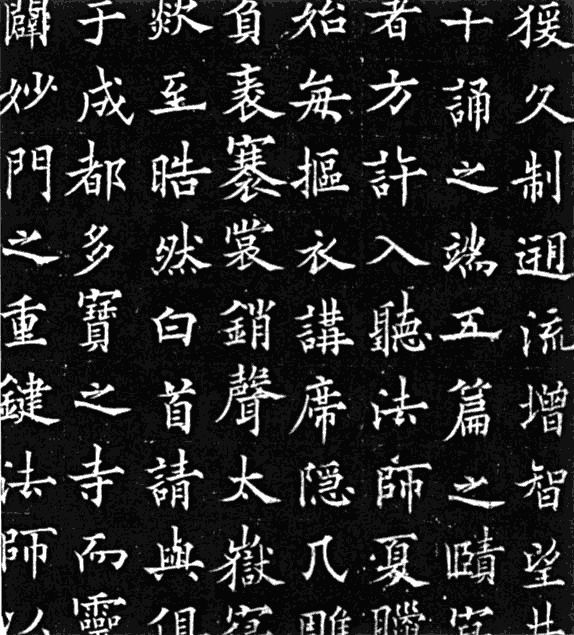Ouyang Tong (?-691), also known as Tongshi, was born in Linxiang, Tanzhou (now Changsha, Hunan). He was the fourth son of Ouyang Xun and his young wife, the Xu family. Official Lantai Ling, Yi Fengzhong Lei moved to Zhongshushe, and was granted the title of Duke of Bohai. Tianzhi was transferred to the Secretary of Liqing for the first time to judge affairs, and became prime minister in the second year. He was killed for rebelling against Wu Chengsi and became the prince.
When Ouyang Xun died, Ouyang Tong was still young. Mother Xu hoped that her son would inherit his father's business and personally supervised calligraphy teaching. At that time, most of his father's handwritings were scattered among the people, and Xu did not want to buy them back at a high price. Ouyang Tong copied day and night, his calligraphy greatly improved, and he fully mastered his father's method. Therefore, he and his father were known as "Big and Little Ouyang". His book has a stronger official meaning, but is too sharp and too subtle, and is not as subtle as his father's. In his later years, he was quite dignified, using raccoon hair as a pen, covering it with rabbit hair, and rhinoceros and elephant bones as a tube. Dong Xuan of the Southern Song Dynasty commented on his book in "Guangchuan Shu Postscript": "The writing is strong and strong, and it reflects the family tradition, but it is slightly injured and rich, so I feel ashamed of my father. As for jumping with surprise and not avoiding danger, it is no different." His handed down works include "Master Daoyin's Monument", "Quan Nan Nan Ji Zhi" and so on.

"Master Daoyin Monument"
"Master Daoyin's Stele" was written by Li Yan and written by Ouyang Tong. It is now collected in the Forest of Steles in Xi'an. The full text of the stele is in regular script, with thirty-four lines and a full line of seventy-three characters. Height 312 cm, width 103 cm. It was built in the third year of Longshuo (AD 663), Emperor Gaozong of the Tang Dynasty. The inscription on the stele is intact. The head of the stele is carved as a Chi's head, and the forehead of the stele is carved with a bird's eye view. Below the stele, there are seven characters written horizontally: "The Stele of the Great Deyin Master".
Master Daoyin's common surname was Hou Yuan, who became a monk at Duobao Temple in Chengdu. During the Zhenguan period of the Tang Dynasty, he assisted Xuanzang in translating Buddhist scriptures at Daci'en Temple in Chang'an. Therefore, the title of the inscription is "The Great Virtue of Translating Scriptures". In the third year of Longshuo (AD 663), his disciple Xuan Ning asked Ouyang Tongshu to erect the "Stele of Master Daoyin" to commemorate him.
Ouyang Tongxue's calligraphy period was a period when calligraphy was undergoing changes in the early Tang Dynasty, and he was famous for being "good at learning from his father's calligraphy". The strokes of this stele are strong and powerful, and the implication of official implication is not as good as that of his father. The square strokes of the strokes add to the steepness of the strokes. There were many opponents in the ancients, and it is related to China's emphasis on virtues. He Yimen said: "The shoulder kiss of Lantai's "Daoyin Stele" is too exposed, and it often flies away when it is closed." Wang Shizhen said: "This stele is like a sick Vimalakirti, high-ranking and poor, although he is not happy, but his eyebrows are There is wind and frost in the air, which can be heavy."








